Terracotta is a traditional earthenware material, found in sculptures, busts, figurines, plates and architectural designs around the world. The word terracotta translates as ‘baked earth’ and due to its classic colour is sometimes left without a glaze, allowing the rich tone of the fired clay to become part of the artwork.
 Above: a selection of ancient terracotta sculptures from classical civilisations
Above: a selection of ancient terracotta sculptures from classical civilisations
With artifacts surviving from the ancient world, it is clear that terracotta can be a long lasting material, however it is at extremely high risk of accidental damage resulting in cracks, breakages or shattered areas and may be put in a vulnerable position through incorrect care and display.
In this article we will look into the history of terracotta as an important artistic medium, as well as the care which should be taken in preserving such items and the remarkable results following terracotta restoration by our conservation team.
 Above: a set of three ancient Cypriot terracotta vessels known as ‘askos’ shaped like a native deer, cow and cat
Above: a set of three ancient Cypriot terracotta vessels known as ‘askos’ shaped like a native deer, cow and cat
What is terracotta?
Terracotta is created with a refined clay which is then fired at around 1,000 °C in a kiln or pit. The material can be sculpted prior to being fired or a large brick can be carved after hardening.
 Above: a terracotta relief panel depicting a pottery studio by R. W. Martin and Brothers, 1882
Above: a terracotta relief panel depicting a pottery studio by R. W. Martin and Brothers, 1882
The finished sculpture gets it’s typical orange colour from the iron content in the earth reacting with oxygen during the firing process. Although the typical shade is a warm brown, terracotta has a variety of tones including pink, yellow and grey. Terracotta can also be painted, this is usually completed over a chalky gesso base. To make the material watertight, or to provide a particular finish, the sculpture or item can also be glazed.
Terracotta in art history
Terracotta can be dated back thousands of years and across many cultures and continents. Prominent examples include pottery and artworks from India, West Africa, Italy, and China.
 Above: a selection of ancient terracotta figurines from different classical cultures and locations across the world
Above: a selection of ancient terracotta figurines from different classical cultures and locations across the world
In ancient Greece, terracotta was used to create both decorative and practical items. Significant pottery of this era include famous black and red vase and amphora designs. The black figure technique dates back to the middle to late Archaic, from 620 to 480 BC and was primarily found in a commercial hub of Corinth and later Athens. The figurative designs were painted before firing, including the extra details to produce further dimensions to the artwork. These vases are culturally important, as they are some of the very first artworks in history to be signed by a named artist.
 Above: ancient terracotta pots including black and red figure vases from ancient Greece
Above: ancient terracotta pots including black and red figure vases from ancient Greece
Many cultures have examples of terracotta figurines, famously The Terracotta Army of Qin Shi Huang, the first Emperor of China. The Terracotta Army is funerary artwork, as this collection of over 8000 sculptures was designed to be buried with the emperor, protecting him in the afterlife. Terracotta statues were also produced in classical Greece, including the Tanagra figurines from the 4th century BC. These figures were coated in a white slip before firing – allowing the artist to paint them afterwards with watercolour tones.
 Above: a detail from The Terracotta Army displaying some of the thousands of figurines at the Imperial tomb
Above: a detail from The Terracotta Army displaying some of the thousands of figurines at the Imperial tomb
In Christian art you may find many examples created from terracotta, well-intact pieces still exist today from the 14th century Gothic period and earlier. Similarly to classical pieces, terracotta of this era was also painted or glazed. Luca della Robbia was a prominent sculptor who primarily used stone and terracotta in his work in the 15th century. Della Robbia’s work is characterised by his use of a high gloss white glaze, the shining effect enhanced the beauty and ethereal nature of the religious figures and scenes displayed in cathedrals and important buildings.
 Above: examples of terracotta artwork from later periods including the white high glazed artworks by Luca Della Robbia
Above: examples of terracotta artwork from later periods including the white high glazed artworks by Luca Della Robbia
Later, it became fashionable to leave terracotta unglazed, displaying the artistic skill and natural colour of the fired clay more vividly. During the 18th century unfinished terracotta was often used to produce busts, famous sculptors who practiced this technique include John Michael Rysbrack, Claude-André Deseine, Pierre Merard and Jean-Baptiste Lemoyne.
 Above: a selection of terracotta busts including examples by Jean-Baptiste Lemoyne, Joseph-Charles Marin, Auguste Rodin and Philippe Laurent Roland
Above: a selection of terracotta busts including examples by Jean-Baptiste Lemoyne, Joseph-Charles Marin, Auguste Rodin and Philippe Laurent Roland
In modern and contemporary art, terracotta can be used in its pure form or as part of a mixed media work. Notable artists who have used terracotta include Pablo Picasso, Antony Gormley, Nancy Fried, Caroline Achaintre, Prune Nourry, and Grayson Perry.
How to care for terracotta
Just like many other forms of art, terracotta can suffer from the environment in which it is placed. Humidity, temperature and sunlight exposure are all factors to consider when caring for these artworks or items.
 Above: a selection of 18th-century Neapolitan crèche figurines with painted terracotta heads, this paint could fade if exposed to UV rays or chemicals
Above: a selection of 18th-century Neapolitan crèche figurines with painted terracotta heads, this paint could fade if exposed to UV rays or chemicals
High humidity, which may be prevalent in kitchens, bathrooms or conservatories, may encourage the growth of organic substances such as algae on an unglazed, porous terracotta surface. In a worst case scenario, mould growth could occur or the overgrowth of algae could create a lack of stability in the structure as small cracks come under pressure and worsen over time – leading to breakages or a brittle surface. Recommended humidity levels for most artworks is around 40% to keep an even level of moisture in the air. Likewise, a temperature with very little fluctuation will provide a consistent atmosphere and reduce any stress on the material – this may occur when a room shifts from cold to hot very rapidly. Consider placing the piece away from doors, open windows or radiators and fireplaces to avoid this fluctuation.
 Above: a detail from a model for a proposed monument by Clodion, 1784
Above: a detail from a model for a proposed monument by Clodion, 1784
Atmospheric particles, such as dust, smoke, nicotine and other airborne contaminants put terracotta at high risk as they settle into the porous material, staining the piece and becoming absorbed into the structure – bringing with them potentially acidic elements which could create deterioration over a period of time. This is most likely to occur upon an unglazed piece, but even those with a protective coating may have vulnerable gaps or cracks which can become ingrained with dirt and debris. Keeping your terracotta away from an open fireplace, indoor smoking, or dusty areas will help to reduce this build up. If an artwork or item is especially valuable, it should be kept behind glass with appropriate humidity levels monitored.
 Above: details from a 19th century bust by Albert-Ernest Carrier-Belleuse, these small details may easily gather dust and debris over time and require specialist cleaning methods
Above: details from a 19th century bust by Albert-Ernest Carrier-Belleuse, these small details may easily gather dust and debris over time and require specialist cleaning methods
Many terracotta pieces may have been painted, or have evidence of paint which has been removed in the past. Any colour on the surface may be at high risk of fading from sunlight, historic, organic pigments vary in their durability – meaning that some will fade faster than others. Not only will this lessen the quality of the terracotta, but also cause a visual disturbance to the original artwork. Avoid bright areas with direct sunlight to prevent this from occurring.
Finally, when it comes to cleaning your terracotta pieces it is recommended that no more than a light dusting is attempted at home. Any intense cleaning or removal or dirt and contaminants should be performed by a professional conservator with tailored solutions, as everyday chemicals in cleaning products may be absorbed by the material and cause further damage.
 Above: a detail from a terracotta frieze which was originally painted red and blue and decorated a prayer hall
Above: a detail from a terracotta frieze which was originally painted red and blue and decorated a prayer hall
Common types of terracotta damage
The most common form of damage to terracotta is accidental damage, this is usually a severe or small breakage to the structure and can be caused by falling from height, breakages from nudges and contact with surrounding objects, or improper handling during removals or transit. Accidental over-cleaning of a painted surface or the use of inappropriate cleaning substances can also cause obvious disturbances to the design and visual quality of the artwork or item.
 Above: an ancient mask which was accidentally damaged and shattered – the pieces were saved and expertly reconstructed by our ceramics specialist
Above: an ancient mask which was accidentally damaged and shattered – the pieces were saved and expertly reconstructed by our ceramics specialist
Historic deterioration is more likely to occur when a terracotta object has been subjected to many different environments over the course of its life. This instability and damage is typically seen in historic or archeological terracotta due to hundreds or thousands of years of exposure to different atmospheres, physical uses, and past damages or repairs, leading to an innately unstable structure and worsening conditions.
 Above: these Indian terracotta wall panels have been in many different environments over the course of their life and have natural, age-related damage on their surface
Above: these Indian terracotta wall panels have been in many different environments over the course of their life and have natural, age-related damage on their surface
Weak points which our conservation team often come across with terracotta figurines are the limbs and most often the neck. Of the many ancient figures that our conservators have treated, the majority of them have suffered from a clean break to the neck or head. Slimmer areas of a terracotta design will always be vulnerable to accidental breakage, even with the utmost care in place.
 Above: various polychrome (coloured) terracotta, these colours could be disturbed by fading, cracking, scratches, rubbing, or over-cleaning
Above: various polychrome (coloured) terracotta, these colours could be disturbed by fading, cracking, scratches, rubbing, or over-cleaning
Damage can develop further with the use of household superglue or sticky tape. Although it may seem like an easy amateur repair following a clean break, the acids in the adhesives can discolour and slowly degrade the area, causing further visual disturbance and deterioration to the terracotta artwork or item.
Can terracotta be restored?
Yes, terracotta can be expertly restored by our ceramics conservator. Breakages can be restored with an often seamless repair, using conservation-appropriate solutions which are non-yellowing and non-acidic.
 Above: a terracotta horse which was accidentally damaged and lost a tail, this was fully restored by our conservator
Above: a terracotta horse which was accidentally damaged and lost a tail, this was fully restored by our conservator
Whilst saved pieces can be reapplied, any missing areas can be completely recreated with an exact level of detail and colouration. When a known weak point is broken, our terracotta restoration conservator can also implant a small metal pin, in order to stabilise the area further and prevent damage from easily recurring in the future.
 Above: a terracotta Chinese figurine which had been smashed into 13 pieces – before and after being restored by our ceramics conservator
Above: a terracotta Chinese figurine which had been smashed into 13 pieces – before and after being restored by our ceramics conservator
Professional terracotta restoration
Terracotta restored at our studio is varied, a popular genre is that of Tang Dynasty figurines such as tomb attendants. The Terracotta Army is not the only example of a grand funerary artwork in Chinese history, as status was often displayed by the number of terracotta figurines attending a gravesite or tomb. Many of these survive today and have a popular collectors market due to their fascinating backstory and often charming aesthetic.
 Above: Tang Dynasty terracotta figurines before and after restoration by our ceramics conservator
Above: Tang Dynasty terracotta figurines before and after restoration by our ceramics conservator
Almost all of the Tang Dynasty figures restored by our ceramics specialist had a clean break to the neck area. To begin the terracotta restoration process, the piece is examined for any contamination and given a very gentle surface clean – this clears away any harmful substances but protects any paintwork or historic characteristics. The broken area is also cleaned and smoothed where required, before a conservation solution is applied to reapply the areas together.
 Above: a Tang Dynasty sculpture which was restored and stabilised by our conservator
Above: a Tang Dynasty sculpture which was restored and stabilised by our conservator
It is with this common breakage that a metal pin can be added to create further stability. Finally, the re-sealed area has the breakage carefully colour-matched (if this is necessary for the visual quality of the figurine). Any missing areas or chips in the terracotta can also be filled or recreated to bring back the overall structure, ensuring that there are no spaces for future deterioration to develop.
How can we help?
If you have a terracotta sculpture, figurine, artwork, or item which requires care, our skilled experts can restore and preserve various damages and signs of deterioration.
To get in touch please email us via [email protected] or call 0207 112 7576.

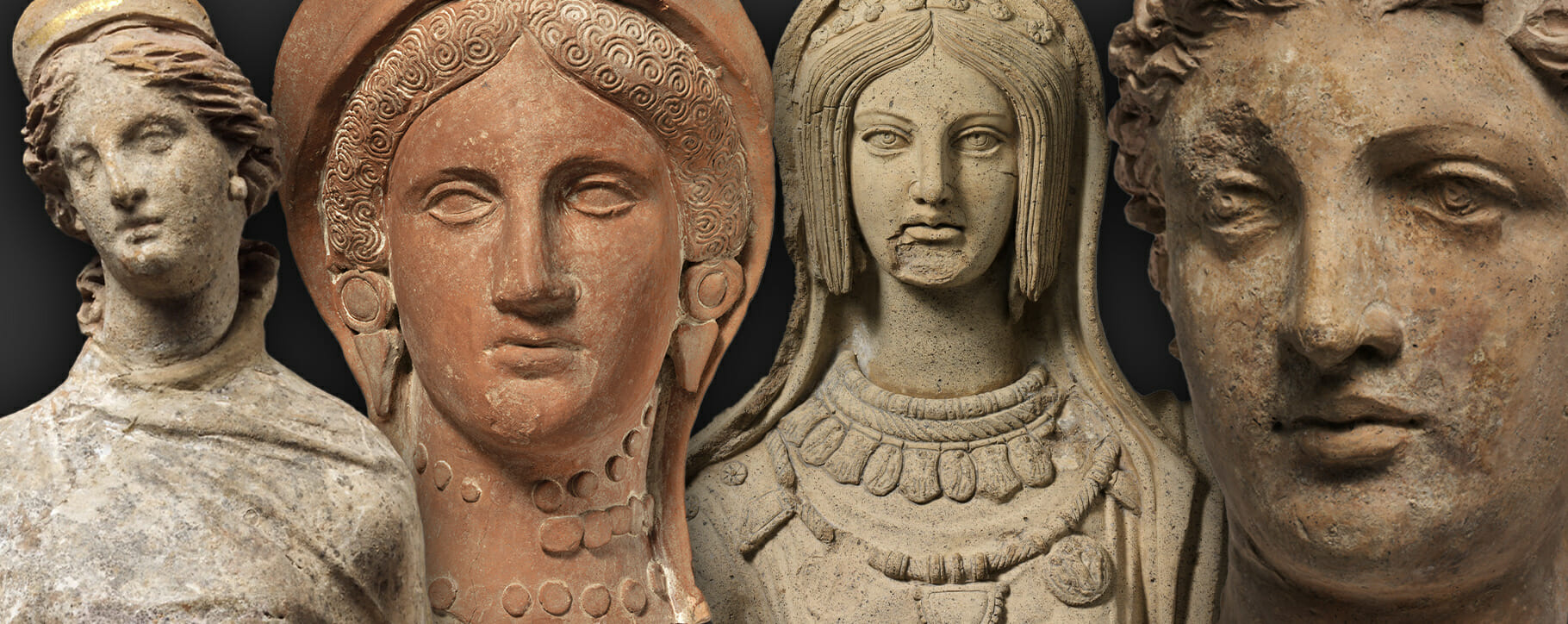 Above: a selection of ancient terracotta sculptures from classical civilisations
Above: a selection of ancient terracotta sculptures from classical civilisations Above: a set of three ancient Cypriot terracotta vessels known as ‘askos’ shaped like a native deer, cow and cat
Above: a set of three ancient Cypriot terracotta vessels known as ‘askos’ shaped like a native deer, cow and cat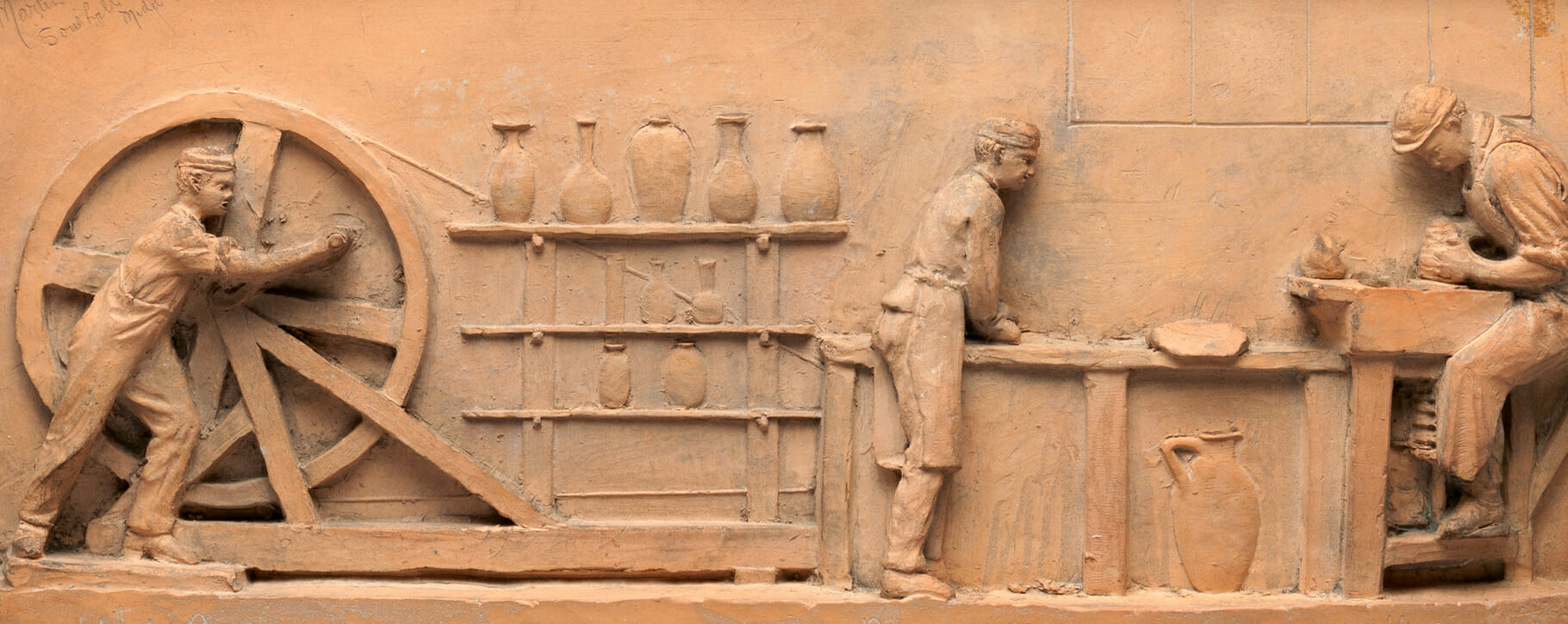 Above: a terracotta relief panel depicting a pottery studio by R. W. Martin and Brothers, 1882
Above: a terracotta relief panel depicting a pottery studio by R. W. Martin and Brothers, 1882 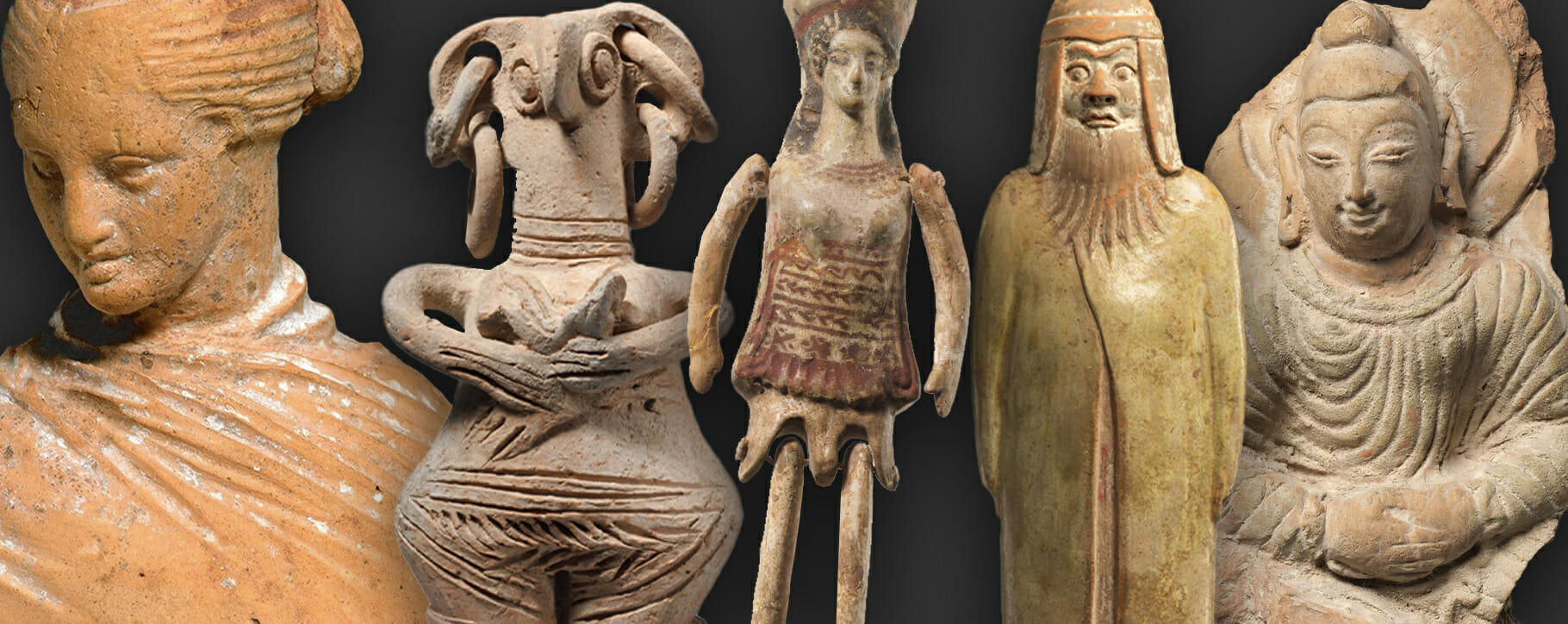 Above: a selection of ancient terracotta figurines from different classical cultures and locations across the world
Above: a selection of ancient terracotta figurines from different classical cultures and locations across the world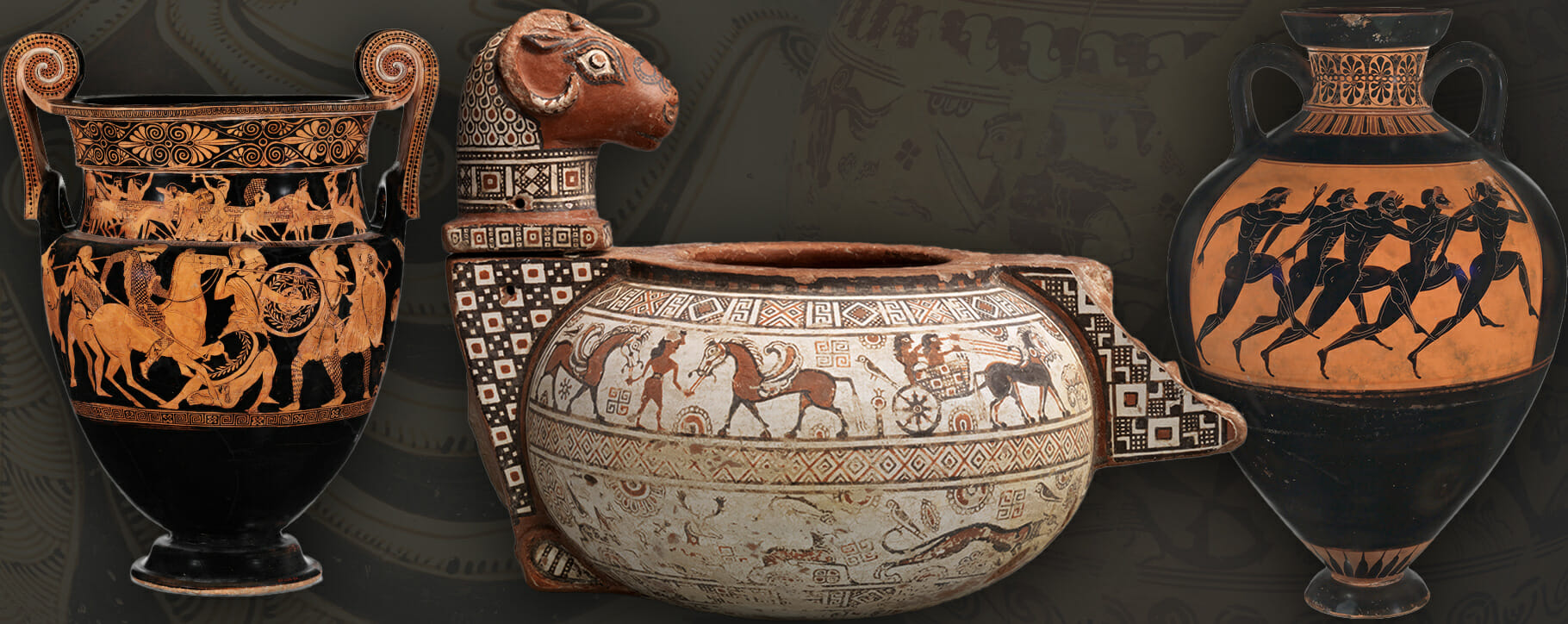 Above: ancient terracotta pots including black and red figure vases from ancient Greece
Above: ancient terracotta pots including black and red figure vases from ancient Greece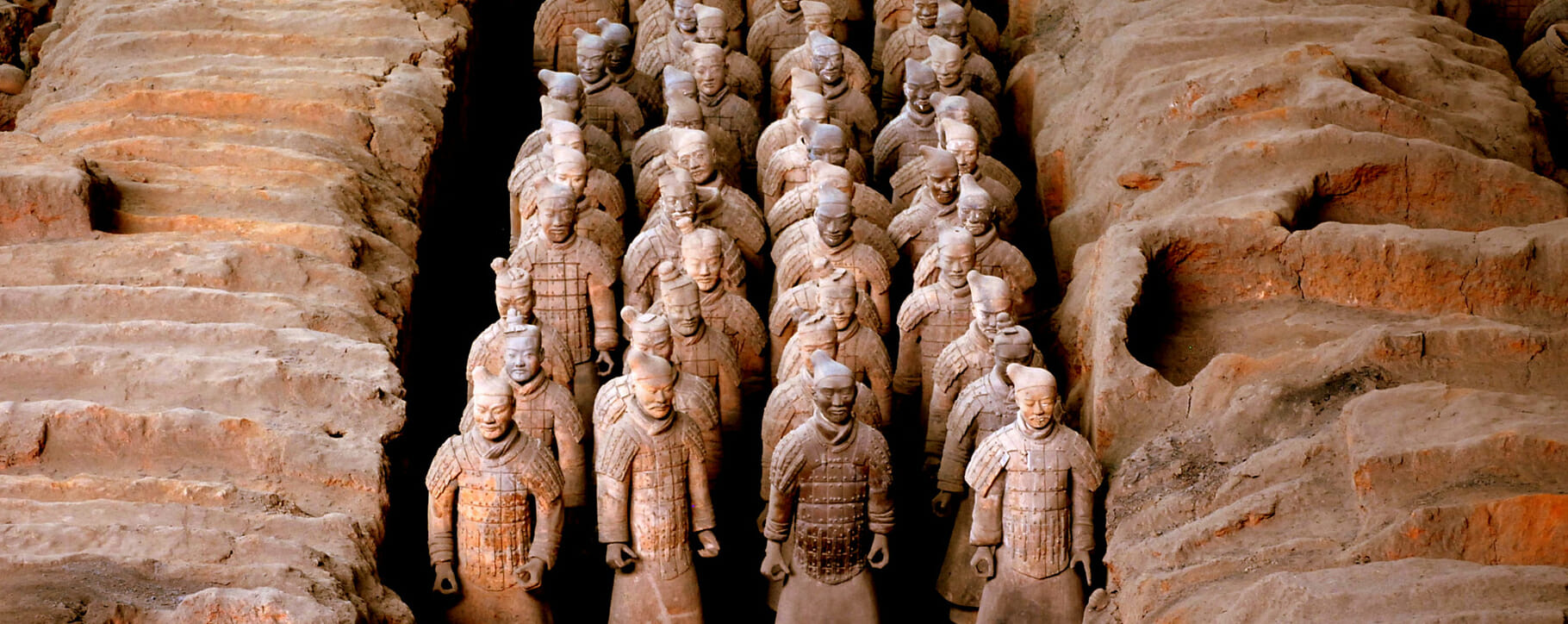 Above: a detail from The Terracotta Army displaying some of the thousands of figurines at the Imperial tomb
Above: a detail from The Terracotta Army displaying some of the thousands of figurines at the Imperial tomb Above: examples of terracotta artwork from later periods including the white high glazed artworks by Luca Della Robbia
Above: examples of terracotta artwork from later periods including the white high glazed artworks by Luca Della Robbia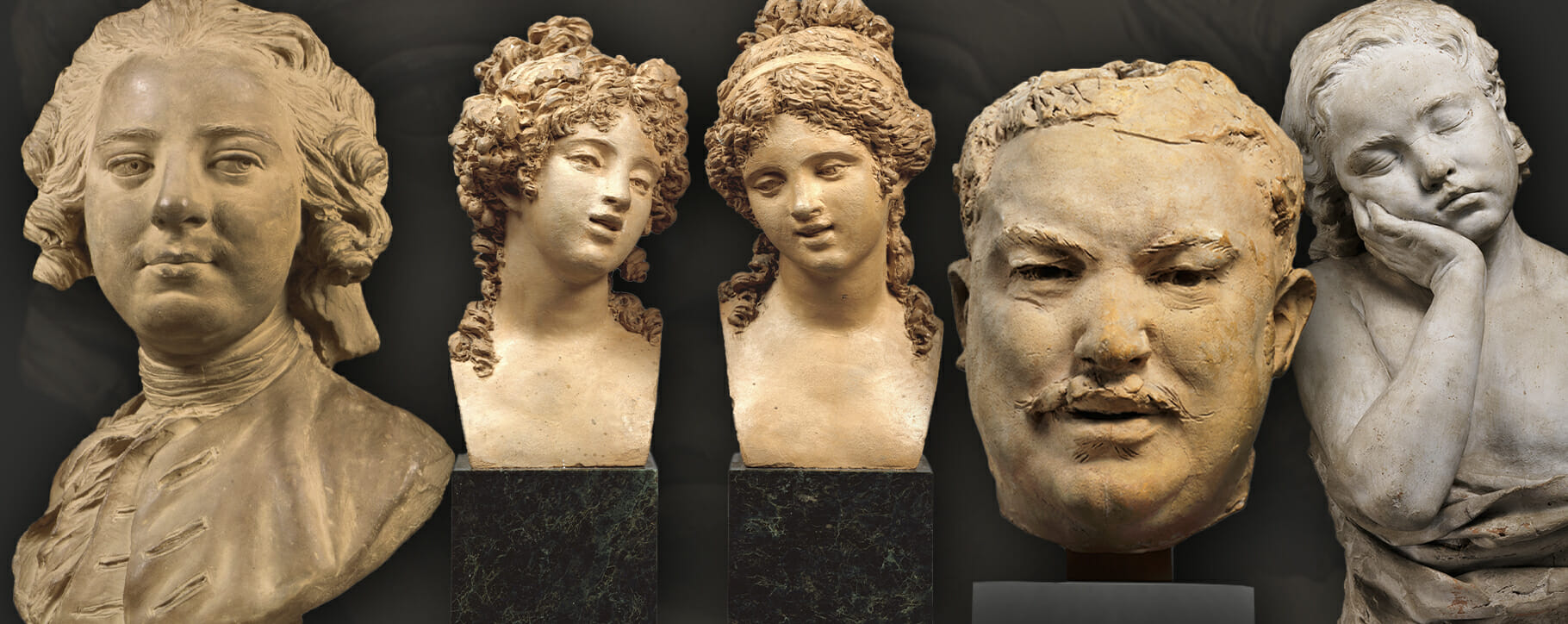 Above: a selection of terracotta busts including examples by Jean-Baptiste Lemoyne, Joseph-Charles Marin, Auguste Rodin and Philippe Laurent Roland
Above: a selection of terracotta busts including examples by Jean-Baptiste Lemoyne, Joseph-Charles Marin, Auguste Rodin and Philippe Laurent Roland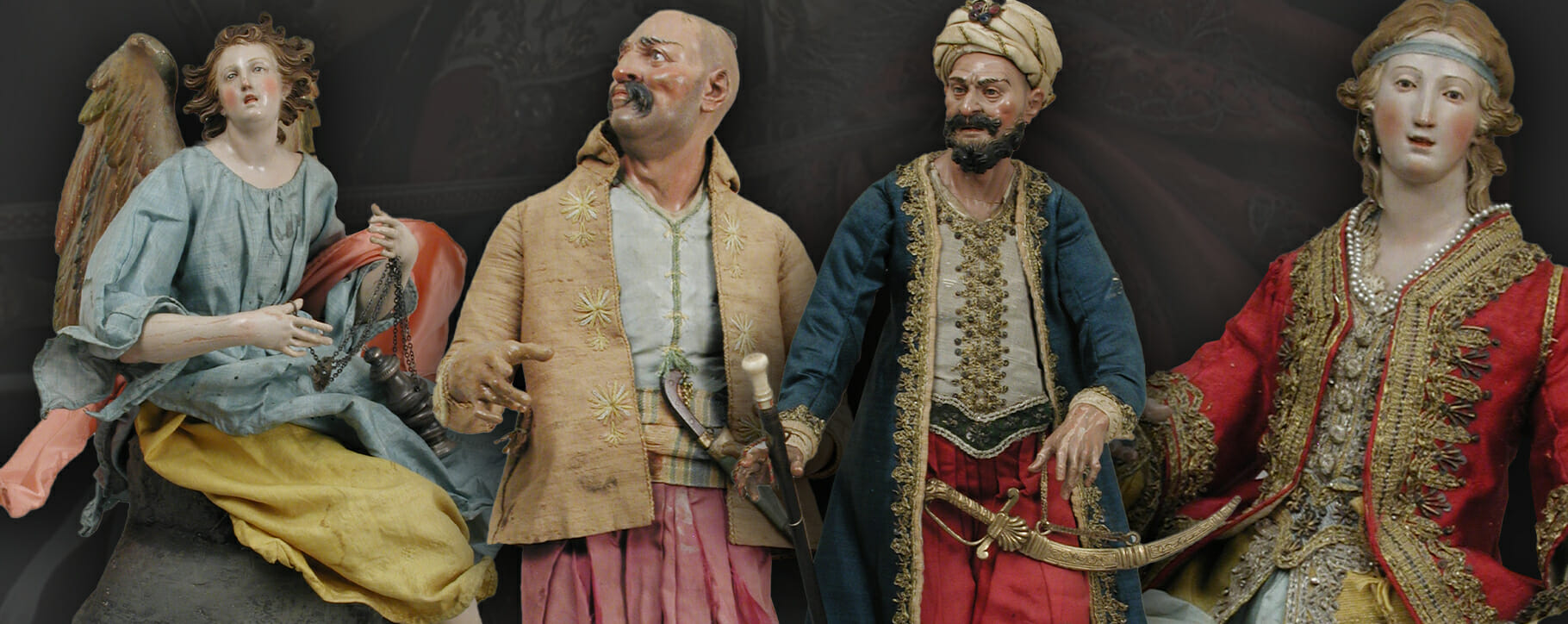 Above: a selection of 18th-century Neapolitan crèche figurines with painted terracotta heads, this paint could fade if exposed to UV rays or chemicals
Above: a selection of 18th-century Neapolitan crèche figurines with painted terracotta heads, this paint could fade if exposed to UV rays or chemicals Above: a detail from a model for a proposed monument by Clodion, 1784
Above: a detail from a model for a proposed monument by Clodion, 1784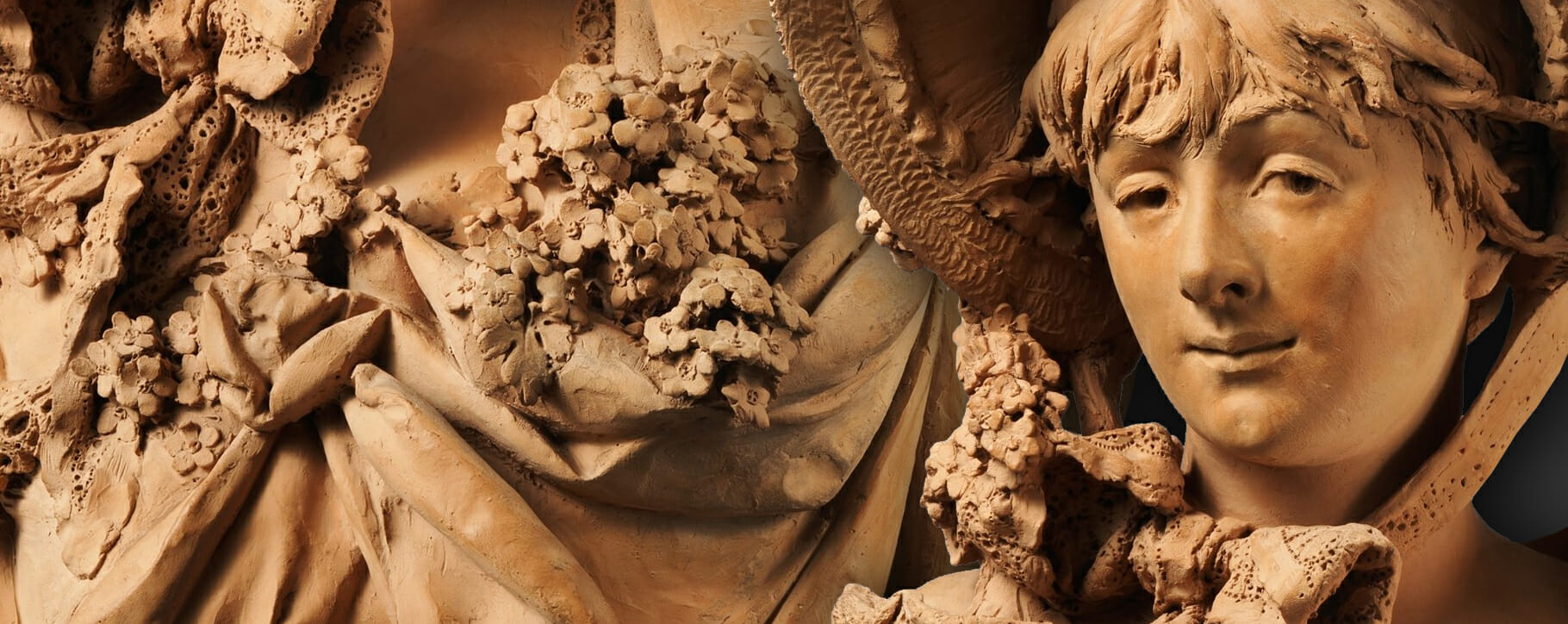 Above: details from a 19th century bust by Albert-Ernest Carrier-Belleuse, these small details may easily gather dust and debris over time and require specialist cleaning methods
Above: details from a 19th century bust by Albert-Ernest Carrier-Belleuse, these small details may easily gather dust and debris over time and require specialist cleaning methods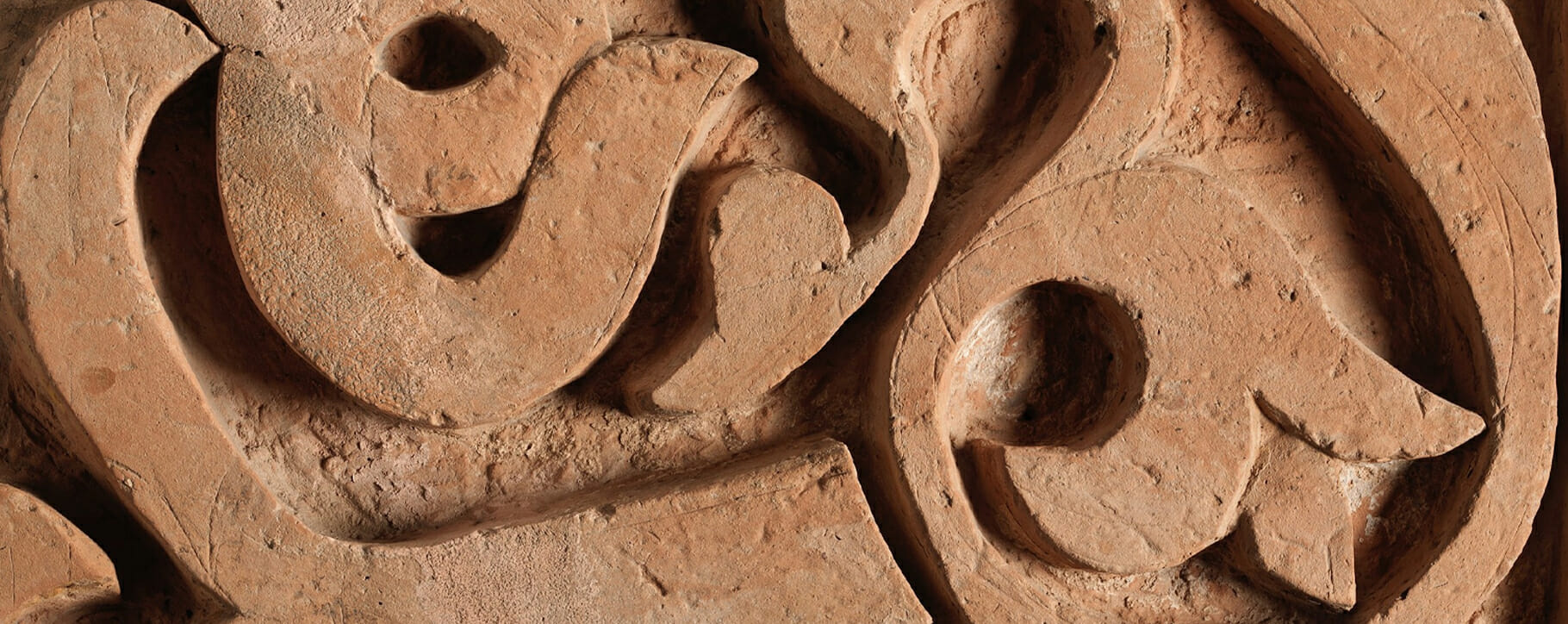 Above: a detail from a terracotta frieze which was originally painted red and blue and decorated a prayer hall
Above: a detail from a terracotta frieze which was originally painted red and blue and decorated a prayer hall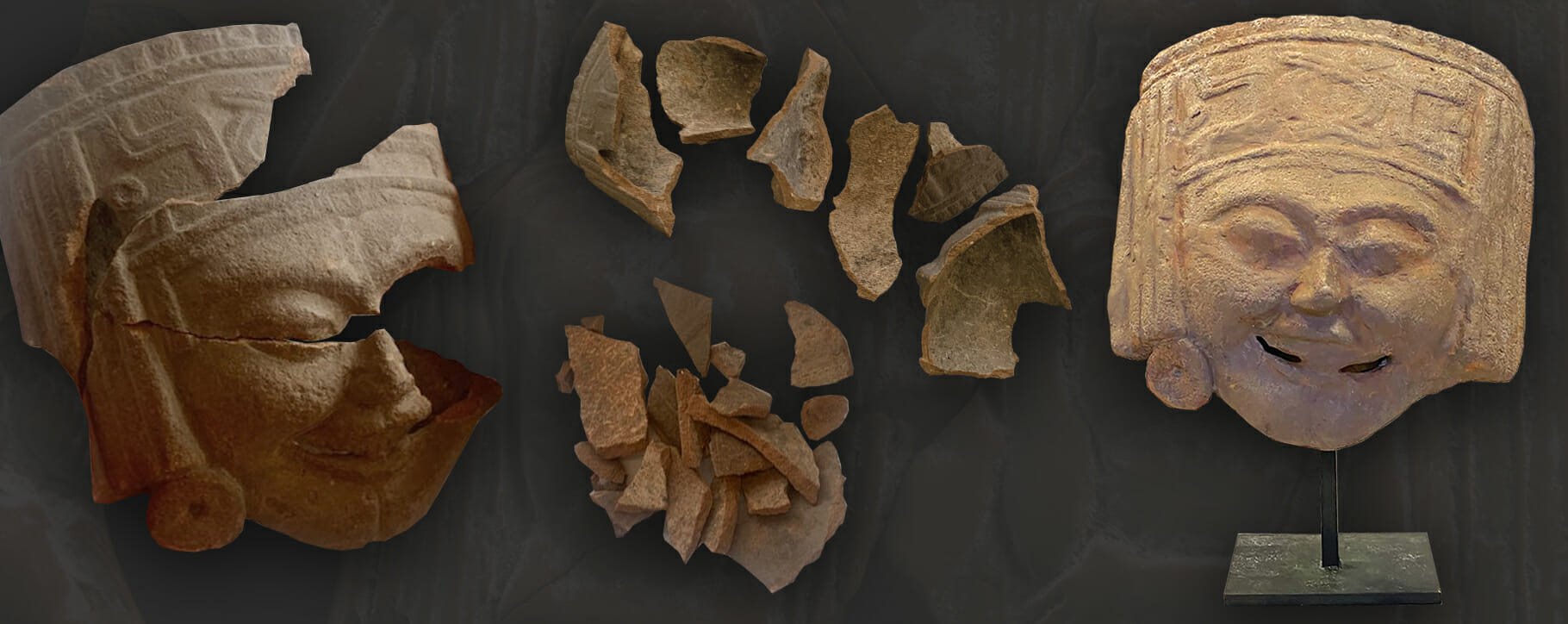 Above: an ancient mask which was accidentally damaged and shattered – the pieces were saved and expertly reconstructed by our ceramics specialist
Above: an ancient mask which was accidentally damaged and shattered – the pieces were saved and expertly reconstructed by our ceramics specialist Above: these Indian terracotta wall panels have been in many different environments over the course of their life and have natural, age-related damage on their surface
Above: these Indian terracotta wall panels have been in many different environments over the course of their life and have natural, age-related damage on their surface Above: various polychrome (coloured) terracotta, these colours could be disturbed by fading, cracking, scratches, rubbing, or over-cleaning
Above: various polychrome (coloured) terracotta, these colours could be disturbed by fading, cracking, scratches, rubbing, or over-cleaning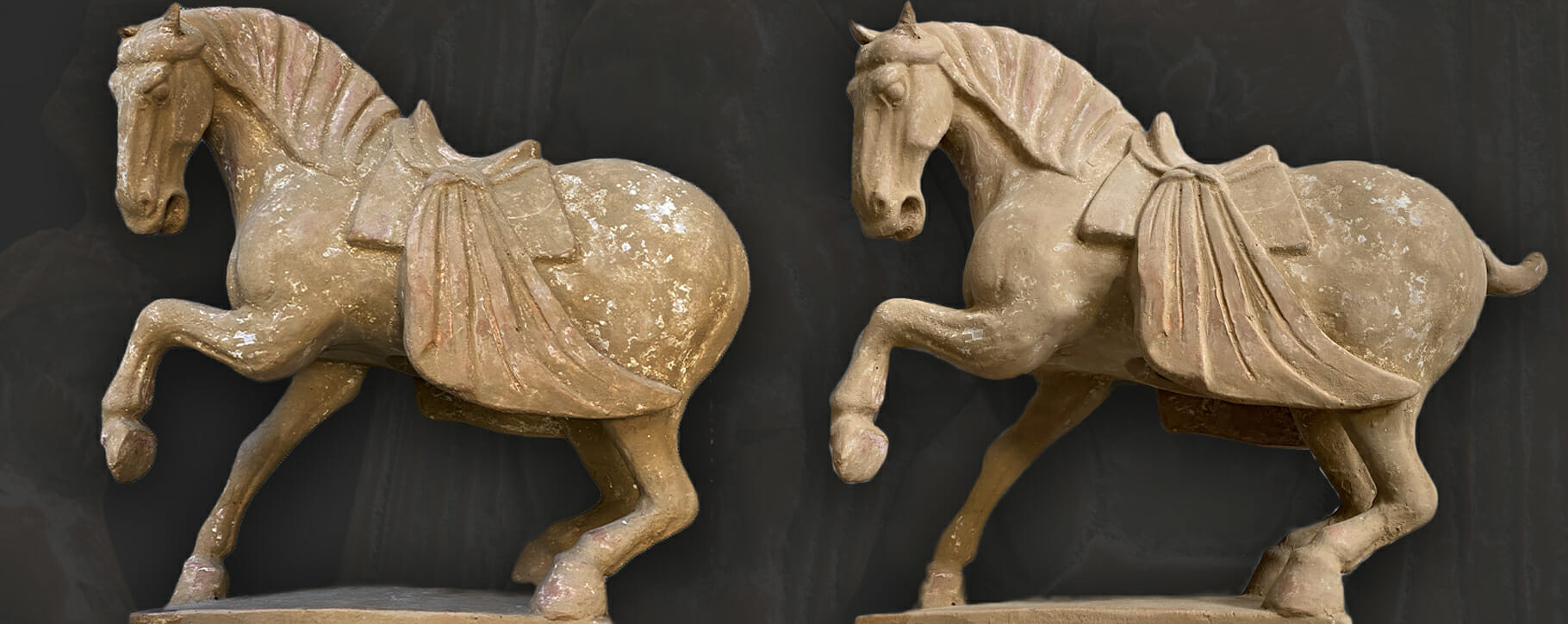 Above: a terracotta horse which was accidentally damaged and lost a tail, this was fully restored by our conservator
Above: a terracotta horse which was accidentally damaged and lost a tail, this was fully restored by our conservator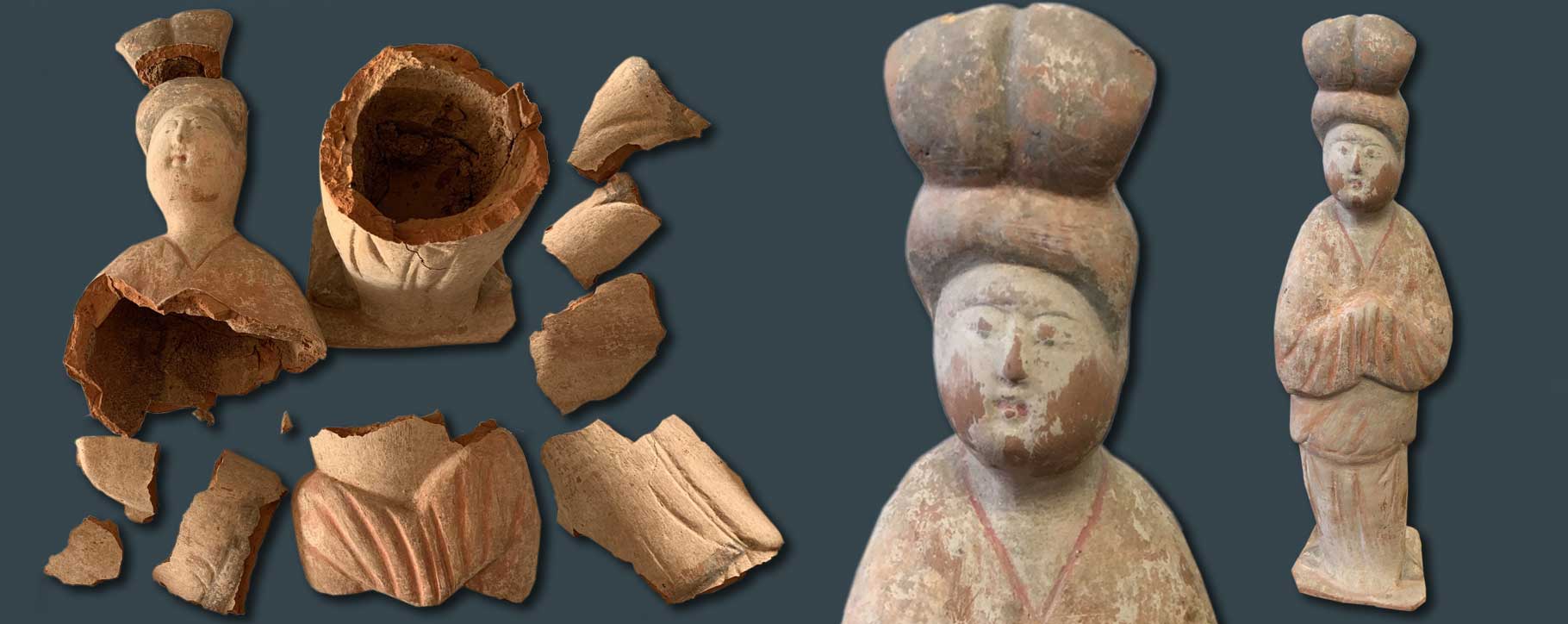 Above: a terracotta Chinese figurine which had been smashed into 13 pieces – before and after being restored by our ceramics conservator
Above: a terracotta Chinese figurine which had been smashed into 13 pieces – before and after being restored by our ceramics conservator Above: Tang Dynasty terracotta figurines before and after restoration by our ceramics conservator
Above: Tang Dynasty terracotta figurines before and after restoration by our ceramics conservator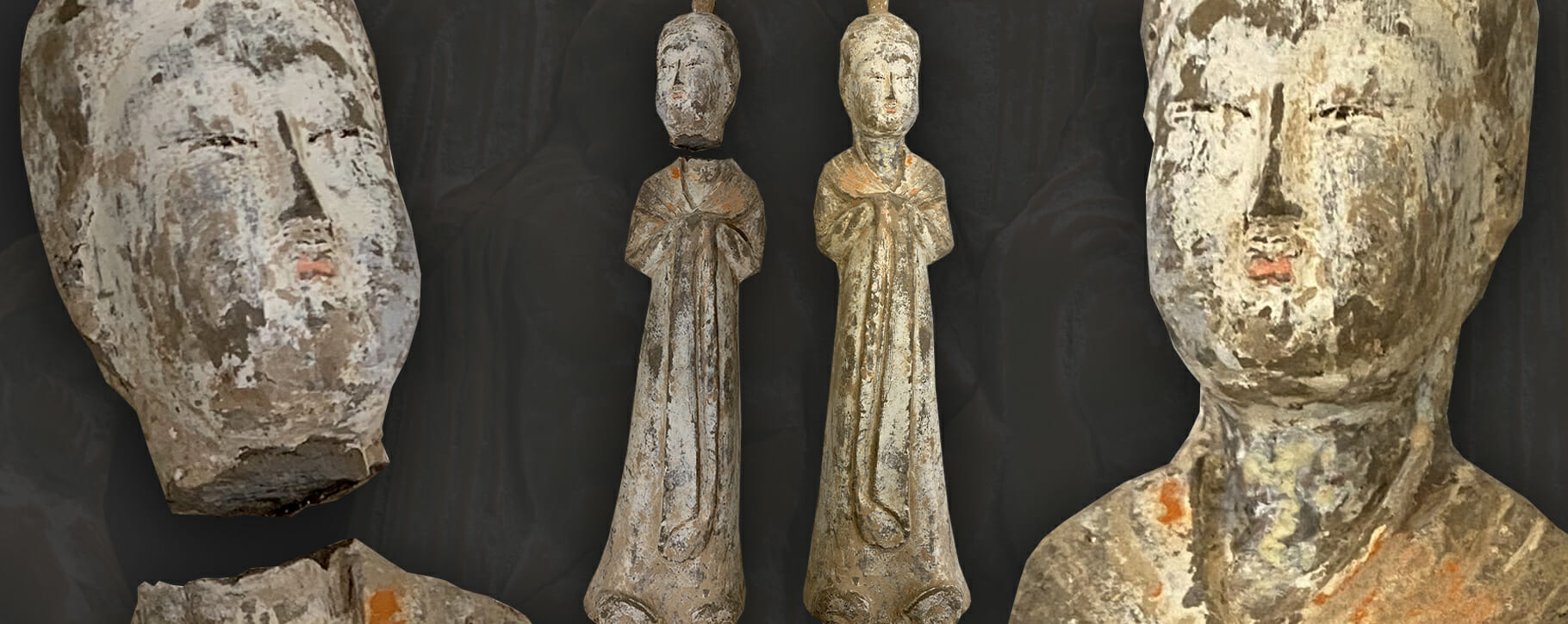 Above: a Tang Dynasty sculpture which was restored and stabilised by our conservator
Above: a Tang Dynasty sculpture which was restored and stabilised by our conservator




